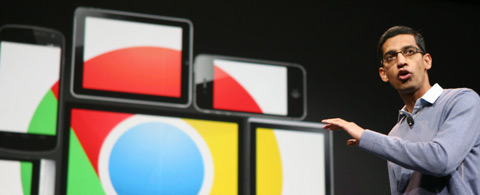Google Chrome to Block Auto-Play Flash Ads beginning September 1st
In a decision that plenty of Chrome users will certainly be happy about(this writer definitely included), Google has put a date of September 1st when the latest version of their browser will start blocking all Flash content that isn’t “central to a webpage” from playing automatically.
Flash media like ads and auto-playing videos on websites that aren’t dedicated expressly to video will pause as soon as the page in question loads.
Of course users can also freely click the ads and other videos to play but the choice will now be in the hands users instead of a website’s automated scripting. Embedded video players like YouTube and Vimeo will still function normally.
This new Flash-blocking aspect of Chrome was first tried out in Chrome earlier in the year as a sort of beta release but is now being implemented completely for all users of the browser.
According to Tomm Li, a browser design expert at Google, the reason for the new blocking policy revolves mainly around battery life in mobile and portable devices, since such auto-playing ads often consume lots of CPU power.
However, as millions of annoyed users can tell you, the rise of ads that play automatically all over the web can sometimes also be downright annoying and deeply intrusive. A sudden burst of audio playing at full volume interrupts a person’s normal activities (like listening to music while working on the web).
These ads often leave users with multiple tabs open scrambling to find their specific source and put an end to the annoyance.
Another benefit of the Flash block is the possibility of it helping to reduce the spread of malware through malicious Flash advertising. This has long been a problematic tendency of Flash –the application’s use as a vehicle for security exploits.
The most recent of these was actually uncovered just recently in July, and allowed hackers to remotely execute malicious code in third party machines.
On the other hand, many advertisers won’t be happy about this new Google Chrome policy. A majority of online advertising still relies on Flash and this is the case even with a lot of mobile ads, despite mobile being an area where Flash still isn’t fully supported.
According to a recent study by one ad management firm (PDF), more than 5.3 billion Flash ads were delivered in the first quarter of 2015. The much smoother and less security leak-prone HTML5 is however slowly starting to expand its share of this market, with 4.2 billion ads in the latter format having been delivered in the same quarter.
Other sites are also following the Google anti-flash trend: Amazon.com, the world’s largest online retailer, will stop accepting Flash as of the same date and is doing so for the sake of giving its customers a “positive, consistent experience on Amazon.”
Time will tell as the tech is put into place and reverberations soon follow.
Read More at Google Chrome to Block Auto-Play Flash Ads beginning September 1st
